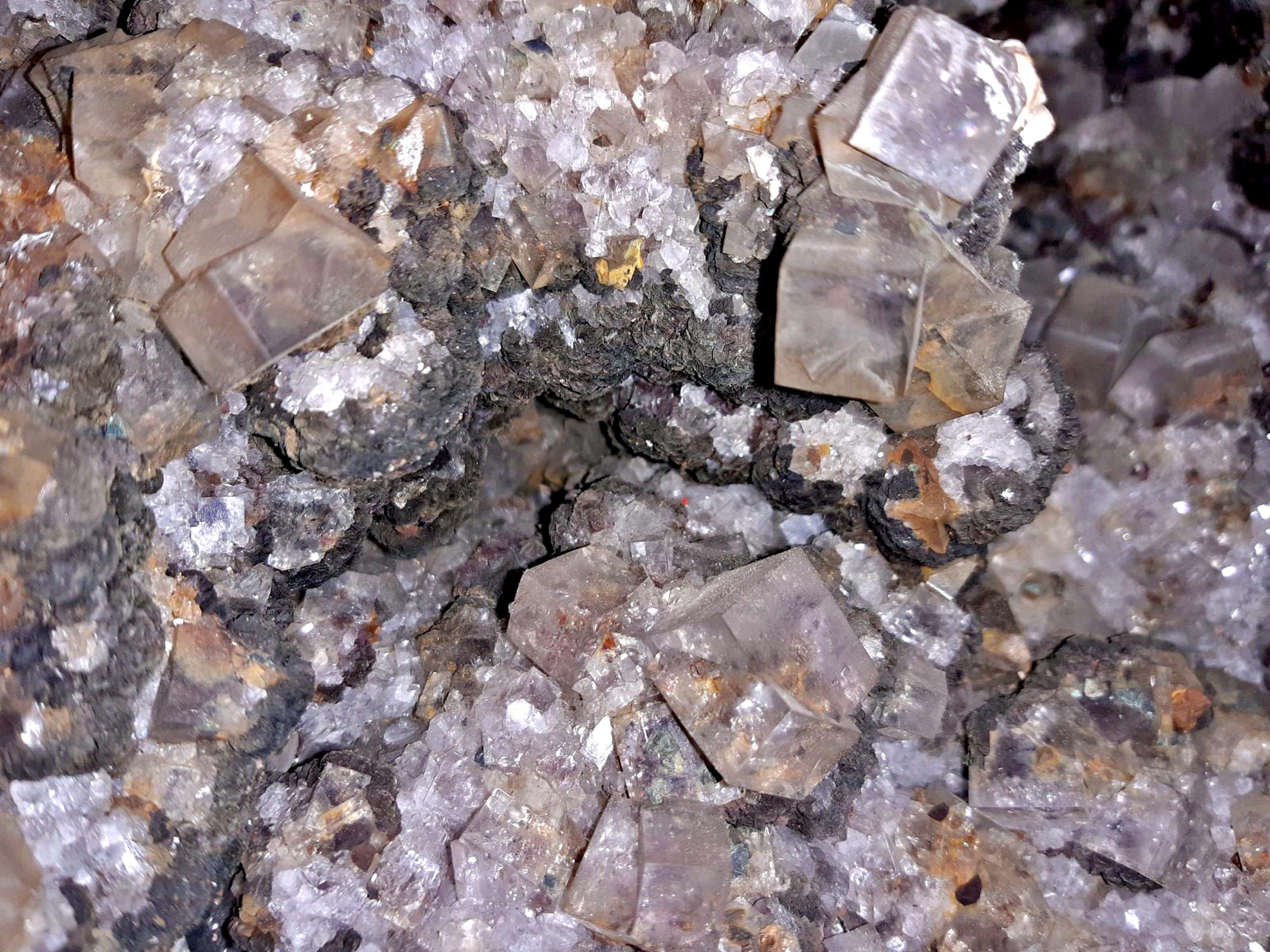Organising Minerals
Published: 26 May 2020
Our collections team have been sorting through hundreds of minerals from the collection and have stumbled across these striking specimens.
Siliceous sinter
(also known as geyserite or fiorite) is formed around hot springs and geysers. The deposits build up over time from the splashes of water and can become large structures like geyser cones or terraces. The water in these springs are enriched with biogenic silica (also called opaline silica and amorphous silica) from algae and other vegetation and it’s this silica which is left behind after the water has evaporated away.

Flourite
Fluorite
(also called fluorspar) is the mineral form of calcium fluoride. The minerals are often brightly coloured due to impurities, but this specimen remained relatively clear as it formed. It usually crystallizes in an isometric cube shape (seen here), although octahedral and more complex isometric forms are also seen regularly. It is used in industry in steel and aluminium production, and in the making of opalescent glass, enamel and cooking utensils.
To see more of our mineral collection please visit Leicester Museum & Art Gallery where you'll find many more examples on display.
